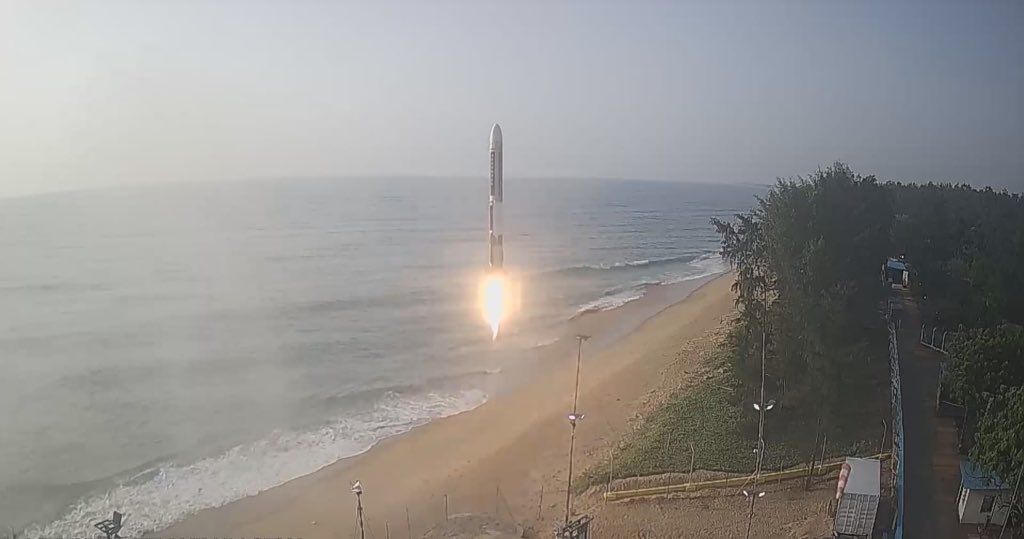Revolutionizing Rocket Technology with 3D Printing
Indian space startup Agnikul Cosmos achieved a significant milestone by successfully launching the nation’s first 3D-printed rocket engine on Thursday, May 30. This breakthrough paves the way for more efficient rocket production, ultimately reducing time and costs associated with building these crucial space vehicles.
“It signals the ability to rapidly assemble rockets that is unparalleled,” stated Satyanarayanan Chakravarthy, a professor of aerospace engineering at the Indian Institute of Technology and a key figure at Agnikul Cosmos.
Advantages of Semi-Cryogenic Engines
The maiden flight not only marked the country’s second private rocket launch but also showcased the use of a semi-cryogenic engine. Unlike traditional cryogenic engines, semi-cryogenic engines offer a more practical solution by using refined kerosene instead of liquid hydrogen. This innovation allows for reduced storage space, normal temperature requirements, increased payload capacity, and higher thrust.
The rocket, named Agnibaan Sorted, is designed to carry up to 660 pounds of payload into a 435-mile orbit. This successful launch followed four previous attempts that were aborted due to technical issues.
Future Prospects and Industry Impact
Pawan Goenka, chairman of the Indian National Space Promotion and Authorization Center, hailed this achievement as a historic moment for India’s space sector. He emphasized that such advancements are not only beneficial for Agnikul Cosmos but also for the entire private space industry in the country.
The Indian Space Association noted that this launch will enhance global confidence in India’s private space endeavors. Agnikul Cosmos’ innovative 3D printing technology allows the company to build a rocket engine in just 75 hours, significantly faster than traditional methods.
India’s Ambitious Space Goals
These technological advancements come at a crucial time as India aims to increase its launch rate, planning up to 30 civil and commercial launches within the next year. The country also has ambitious plans for its human spaceflight program, including missions to low-Earth orbit, the moon, and the establishment of a space station and lunar base in the coming decades.
Image/Photo credit: source url





